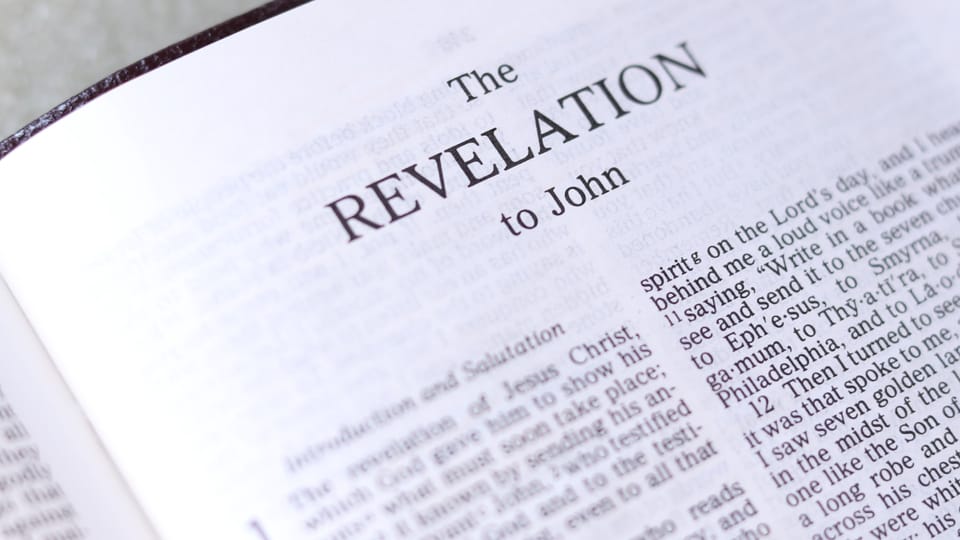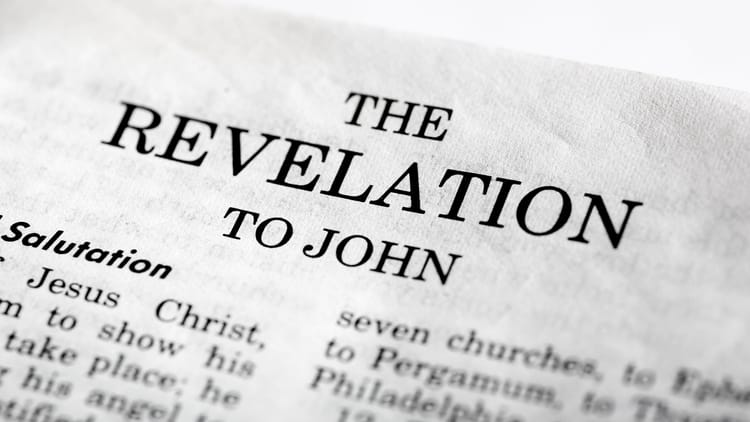What's Happening in the World? (Revelation 1:9-20)

Big Idea: To really understand what’s happening in the world, we need to see the presence of the risen and glorified Jesus.
What’s really going on in the world? It really depends on where you get your news.
I follow an account on social media called All Sides. The tagline is, “Tired of media bias? Expose yourself to different perspectives.” It covers news stories, and then gives examples of how the left, right, and center cover those stories. It’s fascinating to see the same news stories, the same events, covered in very different ways depending on the perspective of the one reporting the news. The result is that when you ask someone about what’s going on in the world, it will really depend on the sources they’re listening to that inform their interpretation of what is happening in the world.
Two Perspectives
As we study Revelation, we’re faced with a question: what is happening in John’s world?
We’re just starting a study on a book of the Bible called Revelation. We’re still in the very first chapter. And John gives us two very different views of what’s happening in his world as he writes this letter to the churches. This is going to help us not only begin to understand Revelation, but it’s also going to help us understand what’s happening in our own worlds.
Perspective One
The first view of what is happening is in verse 9:
I, John, your brother and partner in the tribulation and the kingdom and the patient endurance that are in Jesus, was on the island called Patmos on account of the word of God and the testimony of Jesus.
Here’s the first view of what is happening in John’s world. This is an accurate and true view, but it’s only part of the picture.
In verse 9, we meet the author behind this book: John. He gives himself a brief description: “your brother and partner in the tribulation and the kingdom and the patient endurance that are in Jesus.” Who is this? He’s obviously someone well known enough that the recipients of the letter knew who he was, and trusted his authority.
We have a couple of other hints. The Roman authorities obviously take him seriously enough that they view him as a threat. His use of the Hebrew Scriptures seems to indicate that Greek was not his first language. This is why tradition, from the earliest days of the church, says that Revelation was written by John, the friend of Jesus, the author of the Gospel of John and the epistles of John.
As he writes this book, John would have been very old. This would have been some 60 years after Jesus ascended to heaven, so John would have been a very old man.
That’s the author. Then we get a view of the situation. We read that he “…was on the island called Patmos on account of the word of God and the testimony of Jesus.”
Scholars believe that Revelation was written sometime in the 90s A.D. Here’s what was taking place around that time. Christians in Asia Minor — around the modern-day nation of Turkey — faced opposition and harassment for their faith. Idolatry was everywhere. As a Christian, you could pay a price for refusing to participate. You could be ostracized. It could hurt your ability to earn an income. It could even lead to imprisonment or death at the hands of local officials. And things could get even worse: Christians knew that wider persecution could break out at any time.
John writes that he’s “on the island called Patmos on account of the word of God and the testimony of Jesus.” Patmos is a small, rocky island off the west coast of Turkey. Tradition says that John was there because he was banished to the island as a punishment for his ministry.
So what’s going on in the world? Christians are feeling the heat for their faith. Following Jesus could be dangerous for your reputation, your career, and your life. And that’s just the start; things could get worse. That’s what’s going on as John writes this letter. That’s an accurate but partial view of what was going on at the time.
Perspective Two
But that’s just one view. In verses 10 to 20, John gives us a second perspective. John reports that he was worshiping one Sunday morning when he heard a voice behind him. This wasn’t a mystical experience. John really experienced what he’s about to describe.
...and I heard behind me a loud voice like a trumpet saying, “Write what you see in a book and send it to the seven churches, to Ephesus and to Smyrna and to Pergamum and to Thyatira and to Sardis and to Philadelphia and to Laodicea.” (1:10-11)
Whoever is speaking can’t be ignored. His voice is loud and commanding. And the speaker has a message for seven churches, churches that John knows well that are not too far away.
John turns around to see who’s speaking, and who does he see? John sees what’s really happening in the world.
- Perspective one: Christians are facing persecution, and John is in exile staring at a pile of rocks.
- Perspective two: Jesus is exalted and firmly in control. Jesus, not the Emperor, not the town officials, not the opposition, is in control.
That’s the whole point of Revelation. As Darrell Johnson puts it:
How does Jesus respond? He lifts the cover; he pulls back the curtain. Jesus responds with a revelation; with an apocalypse; with an unveiling of the unseen reality of the present. God responds by giving John a powerful vision of who Jesus is. (Darrell Johnson)
What’s going on in the world? Jesus is about to show John and us. And what we’re going to see is very encouraging.
Let me ask you: what do you see? If you just see what’s going on with your eyes and ears, you’re only seeing part of the picture. If you’re only seeing your circumstances and trials, I’m afraid that you don’t really see what’s actually happening in the world. If you read the newspaper and think you’ve got a good understanding of world events, you’re missing a very big part of the picture. You need what Revelation offers. You need Jesus to show you what’s really happening. You need Jesus to pull back the curtains to show you what’s really going on in the world.
A Vision of Jesus
So what does Jesus reveal? Himself. “Then I turned to see the voice that was speaking to me, and on turning I saw seven golden lampstands, and in the midst of the lampstands one like a son of man…” (1:12-13)
John turns around and sees Jesus, the same person who lived in Palestine with him some 60 years before. But this time he saw a completely different side to Jesus. He saw Jesus as he really is.
John mentions that Jesus is “like a son of man.” John’s making a reference to the prophet Daniel, who’d had a vision hundreds of years before:
I saw in the night visions,
and behold, with the clouds of heaven
there came one like a son of man,
and he came to the Ancient of Days
and was presented before him.
And to him was given dominion
and glory and a kingdom,
that all peoples, nations, and languages
should serve him;
his dominion is an everlasting dominion,
which shall not pass away,
and his kingdom one
that shall not be destroyed.
(Daniel 7:13–14)
In other words, John sees Jesus as the one Daniel prophesied hundreds of years earlier: the central figure in all of history; the One to whom all kingdoms of the world will be given; the One to whom God has given dominion, glory, and a kingdom that will never be taken away.
So what does Jesus look like? John describes eight characteristics in verses 13 to 16:
- His clothing: “clothed with a long robe and with a golden sash around his chest” — Jesus is clothed as the great High Priest. He’s clothed as the King.
- His head: “The hairs of his head were white, like white wool, like snow” — Jesus is like the Ancient of Days. He is God himself. He’s seen kingdoms and empires come and go. He’s ageless. He’s timeless. He’s eternal.
- His eyes: “His eyes were like a flame of fire” — His eyes convey knowledge and insight. His eyes are penetrating. He really sees us.
- His feet: “his feet were like burnished bronze, refined in a furnace” — This is a flashback to another vision that Daniel had in Daniel 10:6. Jesus’ feet reflect both his glory and his stability. Others have feet of clay. Not Jesus. “All other kingdoms rest on shaky feet. His kingdom rests on feet that endure forever” (Darrell Johnson).
- His voice: “his voice was like the roar of many waters” — Jesus speaks with awesome authority.
- His right hand: “In his right hand he held seven stars” — Many believed the stars controlled human events. But the stars don’t control Jesus; Jesus controls the stars. He has a glorious authority.
- His mouth: “from his mouth came a sharp two-edged sword” — Christ’s words are capable of judging the world and the church. He can cut right through the heart and discern what’s really going on.
- His shining face: “his face was like the sun shining in full strength” — Jesus has a divine radiance that will one day fill all of creation. We can no more look upon his glory than we could look upon the blazing sun.
What’s really going on in the world? Whoever looks like they’re in charge isn’t really in charge. We don’t really need to be afraid. Jesus is glorious and fully in charge. As Darrell Johnson puts it, “The presence of the risen and glorified Jesus is the great unseen reality of the present. Right here. Just behind a very thin veil.”
Having seen Jesus in all his glory, John’s response is completely understandable: “When I saw him, I fell at his feet as though dead” (1:17). We need to see Jesus in his glory. If we did, we would fall down in worship and awe before him.
Jesus Has a Message
This passage wraps up with the words of Jesus, the exalted King and Lord. Jesus says three things:
- First, don’t be afraid. “Fear not, I am the first and the last, and the living one. I died, and behold I am alive forevermore, and I have the keys of Death and Hades” (1:17-18). Whatever you’re facing, you don’t need to be afraid. Jesus is fully in charge. He’s already defeated our worst enemy. We have absolutely nothing to fear.
- Second, he is going to tell us something. “Write therefore the things that you have seen, those that are and those that are to take place after this” (1:19). Jesus is about to show us what’s really going on in the world, and he wants us to listen. I’m ready. Who wouldn’t be after an introduction like that?
- Third, Jesus is present with the church. “As for the mystery of the seven stars that you saw in my right hand, and the seven golden lampstands, the seven stars are the angels of the seven churches, and the seven lampstands are the seven churches” (1:20). Jesus stands in the middle of his church. He walks among them. He has authority over them. We’re not left alone. Jesus is very present with his church. GFC, Jesus is close to our church today. He is not remote; he is with us, and he has a message for us.
What’s really going on in the world?
One perspective is that there are a couple of serious wars going on; inflation has crept up the past few years; politics is messy; the church in the west is in retreat. That’s one perspective, and it’s the one we usually see, but it’s very incomplete.
Here’s another perspective. Jesus stands in our midst, and he is glorious. He’s clothed as a King and as your Priest. He’s seen kingdoms come and go. His eyes blaze like fire. His kingdom is strong and unmovable. When he speaks, his voice roars. He is in charge of the world and the church. His face shines in glory. He’s conquered sin and death. And he has something to say to his church.
Until we see the presence of the risen and glorified King, we won’t understand what’s happening in the world. But once we see him, we can stop being afraid. And we can listen carefully to what he wants to say. “Listen to his call, look to his glory, live by his power, stand up for him, stand in awe of him, and stand firm in him” (Ian Hales).





